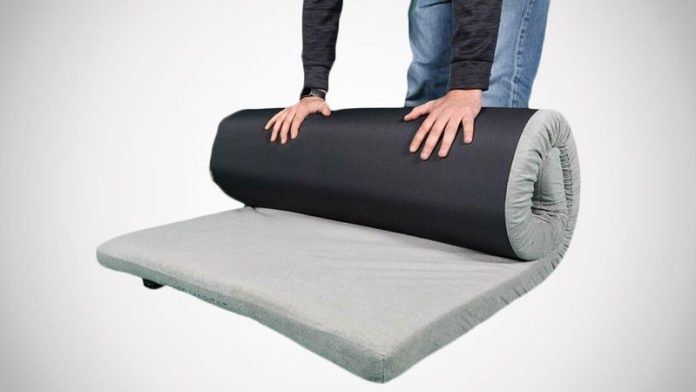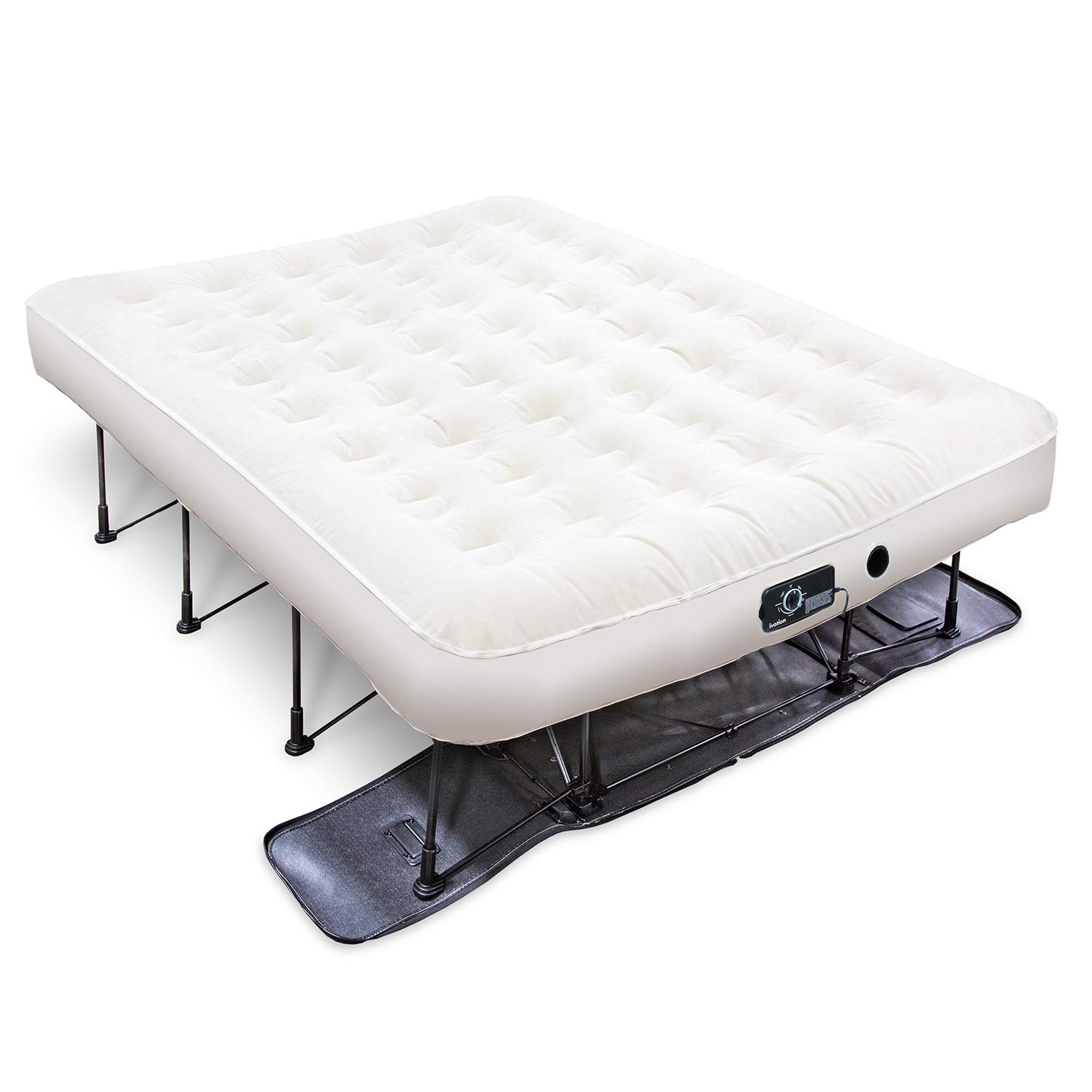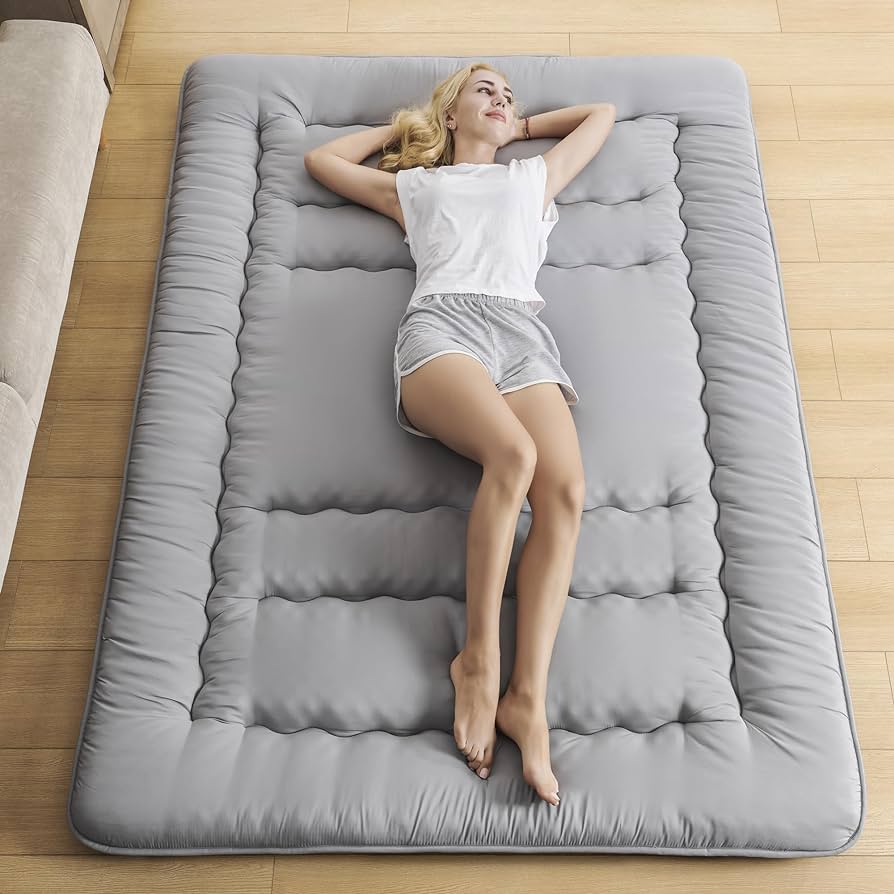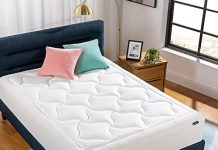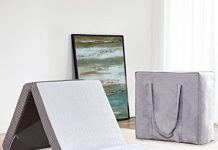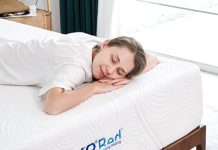Curious about the performance of roll up mattresses? Wonder no more, as we uncover the secrets behind their level of bounce and support. Whether you enjoy a springy surface that gently cradles your body or a firm foundation that provides optimal back support, we have the answer you’re looking for. Get ready to discover the fascinating world of roll up mattresses and find the perfect balance between bounce and support for your best night’s sleep.
Review contents
Understanding Roll Up Mattresses
Definition of Roll Up Mattresses
Roll up mattresses, also known as bed-in-a-box mattresses, are a type of mattress that can be compressed, rolled, and shipped in a compact box. These mattresses are made from materials such as foam, latex, or a combination of both. They are designed to offer convenience and ease of transportation, making them a popular choice for those who may have limited access to their bedroom or need to move frequently.
Benefits of Roll Up Mattresses
Roll up mattresses offer numerous benefits that make them a compelling choice for many people. Firstly, their compact packaging allows for easy delivery and setup. Instead of dealing with the hassle of maneuvering a full-sized mattress through narrow doorways or up multiple flights of stairs, roll up mattresses can be conveniently carried inside and set up in a matter of minutes.
Furthermore, roll up mattresses are often more affordable compared to traditional mattresses. By cutting out the middleman and the expensive showroom space, direct-to-consumer mattress companies can offer their products at lower prices. This affordability makes roll up mattresses an accessible option for a wide range of budgets.
Another advantage of roll up mattresses is that they can be easily returned. Most online mattress companies offer generous trial periods, allowing customers to test the mattress in the comfort of their own home. If the mattress doesn’t meet their needs, they can simply return it and receive a full refund.
Types of Roll Up Mattresses
There are several types of roll up mattresses available on the market, each offering different features and benefits. The most common types include memory foam mattresses, latex mattresses, and hybrid mattresses.
Memory foam mattresses are known for their contouring and pressure-relieving properties. They are made from a viscoelastic foam that conforms to the body’s shape, providing personalized support and relieving pressure points. These mattresses are an excellent choice for individuals who suffer from back or joint pain.
Latex mattresses, on the other hand, are made from natural or synthetic latex foam. They offer a responsive and resilient sleeping surface that keeps your spine aligned and supports your body. Latex mattresses are hypoallergenic and resistant to dust mites, making them a great option for individuals with allergies or asthma.
Hybrid mattresses combine both foam and coil systems to provide the benefits of both materials. The foam layers offer contouring and pressure relief, while the coils provide support and bounce. This combination of materials creates a balanced sleep surface suitable for a wide range of sleepers.
The Bounciness Factor
What Does Bouncy Mean for a Mattress?
When we refer to the “bounciness” of a mattress, we are talking about how much it responds to pressure and how quickly it returns to its original shape after being compressed. A bouncy mattress offers a springy feel and is often associated with responsiveness and motion transfer.
Factors Affecting Bounciness
Several factors contribute to the bounciness of a roll up mattress. One of the main factors is the type of material used in the construction of the mattress. Innerspring mattresses, for example, tend to be more bouncy due to their coil systems. On the other hand, memory foam mattresses are less bouncy as they absorb motion and distribute it evenly across the surface.
The thickness and density of the materials also play a role in determining the bounciness of a roll up mattress. Thinner and less dense foam layers typically result in a more responsive and bouncy mattress, while thicker and denser layers offer more stability and reduce motion transfer.
Bouncy Roll Up Mattresses: Pros and Cons
Opting for a bouncy roll up mattress comes with its own set of advantages and disadvantages. The bounciness can be beneficial for individuals who enjoy a more lively and responsive sleep surface. It may make activities such as changing positions during the night or getting in and out of bed easier.
However, the increased level of bounce may lead to more motion transfer, which can be a downside for couples who share a bed. If one person moves or gets out of bed, the motion can be felt by the other person, potentially disrupting their sleep.
This image is property of thebedconsultant.com.
The Supportiveness Factor
What Does Supportive Mean for a Mattress?
A supportive mattress provides proper alignment and spinal support, allowing your body to rest in a neutral position. It prevents the sinking or sagging of certain body parts, such as the hips and shoulders, which can lead to discomfort and back pain.
Factors Affecting Supportiveness
The supportiveness of a roll up mattress is influenced by various factors. The type and quality of the materials used in the construction play a significant role. High-density foam or latex mattresses are often considered more supportive, as they provide a solid and stable foundation for the body.
Additionally, the firmness level of the mattress affects its supportiveness. Different individuals have different preferences when it comes to mattress firmness, but generally, a medium-firm mattress tends to be the most supportive as it strikes a balance between comfort and proper support.
Supportive Roll Up Mattresses: Pros and Cons
Choosing a supportive roll up mattress can offer several benefits for your sleep quality and overall well-being. A supportive mattress promotes spinal alignment, reduces pressure points, and can alleviate or prevent back pain. It ensures that your body maintains proper posture during sleep, resulting in a more restful and rejuvenating sleep experience.
However, it’s important to note that individual comfort preferences may vary. Some individuals may find a highly supportive mattress to be too firm and uncomfortable. It’s crucial to strike the right balance between support and comfort to ensure a good night’s sleep.
Comparing Bounce and Support
The Relationship Between Bounce and Support
Bounce and support are two distinct characteristics of a roll up mattress that play a crucial role in your overall sleep experience. While they are different, they are also interrelated.
A mattress with good bounce can contribute to a supportive sleep surface by allowing for quick and easy movement. It helps you change positions effortlessly and prevents the feeling of being trapped or sunk into the mattress. On the other hand, support ensures proper spinal alignment and even weight distribution, which enhances comfort and reduces the risk of pressure points.
Finding the Right Balance for Your Needs
When choosing a roll up mattress, it’s essential to find the right balance between bounce and support based on your personal preferences and sleep requirements. Consider factors such as your preferred sleep position, body weight, and any specific health concerns.
Back or stomach sleepers may benefit from a slightly bouncier mattress, as it facilitates ease of movement and helps maintain a neutral spine position. Side sleepers, on the other hand, may prioritize support to alleviate pressure on their hips and shoulders.
It’s advisable to test out different mattress models and firmness levels to determine the ideal balance between bounce and support that suits your individual needs.
This image is property of Amazon.com.
Choosing the Right Roll Up Mattress
Considerations for Bounce
When it comes to considering the bounce of a roll up mattress, it’s important to assess your personal preferences and sleep habits. If you prefer a more responsive sleep surface and enjoy the feeling of being cradled by your mattress, opting for a mattress with a higher level of bounce may be the right choice for you.
Factors to consider when evaluating the bounce of a roll up mattress include the type of material used, the thickness and density of the foam layers or coil systems, and the overall construction of the mattress. Keep in mind that a balance between bounce and motion isolation is key to a comfortable sleep experience, especially if you share your bed with a partner.
Considerations for Support
Supportiveness should also be a significant consideration when selecting a roll up mattress. Assess your preferred sleep position, body weight, and any specific health concerns you may have.
A roll up mattress with a medium to medium-firm firmness level is generally a safe bet in terms of providing adequate support. However, keep in mind that different brands and models may have variations in firmness levels, so it’s crucial to consult reviews and specifications to ensure the desired level of support.
Assessing Your Personal Sleep Preferences
Ultimately, the right roll up mattress is the one that aligns with your personal sleep preferences. Take into account factors such as your preferred level of bounce, desired level of support, and any other unique requirements you may have.
Consider factors including temperature regulation, motion isolation, and any specific features or technologies that may enhance your sleep experience. Reading customer reviews and consulting with mattress experts can provide valuable insights into which roll up mattress may meet your needs the best.
The Influence of Materials and Construction
Coil Systems and Bounciness
In roll up mattresses that incorporate coil systems, the type and arrangement of coils can greatly impact the bounciness of the mattress. Traditional innerspring mattresses typically provide a high level of bounce due to their interconnected coil systems. Each coil responds independently to pressure, resulting in a springy feel.
However, pocketed coil systems, which consist of individually wrapped coils, can offer a more balanced combination of bounce and motion isolation. The individual coils respond to pressure independently, reducing motion transfer while still providing a certain level of bounce.
Foam Layers and Supportiveness
Foam is a popular material used in roll up mattresses due to its ability to contour and offer pressure relief. Memory foam, in particular, is known for its slow response to pressure and its ability to conform to the body’s shape. This contouring provides personalized support and can help relieve pressure points.
The thickness and density of the foam layers in a roll up mattress affect its overall supportiveness. Thicker and denser foam layers tend to be more supportive, offering a solid and stable sleep surface. However, it’s important to strike a balance, as excessively thick or dense layers can lead to a lack of responsiveness and flexibility.
Hybrid Mattresses: Blending Bounce and Support
Hybrid mattresses aim to combine the benefits of different materials to create an optimal sleep surface. These mattresses typically feature a combination of foam layers and coil systems. By blending the contouring and pressure-relieving properties of foam with the bounce and support of coils, hybrid mattresses offer a balanced sleep experience.
Hybrid mattresses can be a suitable choice for individuals who desire both bounce and support. They provide the responsiveness needed for ease of movement while ensuring proper spinal alignment and support. When selecting a hybrid roll up mattress, consider the quality and construction of both the foam and coil components to ensure a durable and comfortable sleep surface.
This image is property of cdn.trendhunterstatic.com.
Testing and Reviews
Expert Opinions on Bounciness
Expert reviews can offer valuable insights into the bounciness of different roll up mattresses. Different experts may have varying criteria for evaluating bounce, so it’s beneficial to seek multiple perspectives.
Experts often conduct experiments to assess the level of bounce, including measuring the level of motion transfer and the response time of the mattress. These tests can provide an objective measurement of bounce and help consumers make informed decisions.
Customer Reviews on Support
Customer reviews are an excellent resource for understanding the supportiveness of roll up mattresses. Actual users offer insights into their personal experiences and how supportive the mattress has been for them.
Pay attention to reviews from individuals with similar sleep preferences and needs to gain a more accurate understanding of how supportive a particular mattress may be. Look for consistency in reviews and consider both positive and negative feedback to make an informed decision.
Comparing Different Brands and Models
When comparing different brands and models of roll up mattresses, it’s helpful to consider the specific features, materials, and constructions. Evaluate the bounciness and supportiveness of each option based on the information provided by the manufacturer, as well as reviews from experts and customers.
Comparing the specifications, such as foam density, coil gauge, and the overall design, can give you a better understanding of how each mattress may perform in terms of bounce and support. Additionally, make note of any trial periods or warranties offered by the manufacturer to ensure you have the flexibility to exchange or return the mattress if it doesn’t meet your expectations.
Lifespan and Durability
How Bounciness and Support Change Over Time
Over time, the bounciness and supportiveness of a roll up mattress may change due to regular use and natural wear and tear. The materials may gradually lose their elasticity, resulting in decreased bounce and diminished support.
Foam mattresses, especially those with lower-density foam, may be more prone to compression and sagging over time. Coil systems in hybrid mattresses may also experience wear, which can affect their overall bounce and support. It’s important to consider the quality of the materials and construction when assessing the long-term durability and performance of a roll up mattress.
Considerations for Long-Term Use
To ensure the long-term durability and maintain the desired level of bounce and support in a roll up mattress, proper care and maintenance are essential. Follow the manufacturer’s guidelines for routine maintenance, such as rotating the mattress or using a mattress protector.
Investing in a high-quality roll up mattress from a reputable brand can also contribute to its long-term performance. Consider the warranty period offered by the manufacturer, as it can be an indication of their confidence in the durability and quality of their product.
This image is property of Amazon.com.
Real-Life Experiences
What Users Say About Bounce and Support
Real-life experiences from users of roll up mattresses can provide valuable insights into how the mattress performs in terms of bounce and support. Reading customer reviews and testimonials can help you gauge the overall satisfaction levels and identify any trends or common themes.
Look for feedback from individuals with similar preferences and concerns to get a better understanding of how the mattress may meet your specific needs. Pay attention to both positive and negative reviews to gain a comprehensive perspective.
Common Complaints and Praises
While individual experiences may vary, common complaints and praises about the bounce and support of roll up mattresses can provide important information. Some users may praise the bounciness for its ease of movement, while others may complain about excessive motion transfer.
Similarly, individuals may praise the supportiveness of a mattress for its ability to alleviate back pain, while others may find it too firm or lacking in contouring. By identifying patterns in feedback, you can make a more informed decision about which roll up mattress may be the best fit for you.
Maintenance and Care
Preserving Bounciness and Supportiveness
Proper maintenance and care are crucial for preserving the bounce and support of a roll up mattress over time. Follow the manufacturer’s guidelines for mattress care, which may include recommendations for rotating the mattress, using a mattress protector, and cleaning spills or stains promptly.
Regularly inspect the mattress for any signs of wear or damage. Addressing issues such as sagging or indentations promptly can help maintain proper support and prevent further damage to the mattress.
Cleaning Guidelines for Roll Up Mattresses
To keep your roll up mattress clean and hygienic, follow the cleaning guidelines provided by the manufacturer. Most roll up mattresses can be spot-cleaned using a mild detergent and water. Avoid using abrasive cleaners or excessive moisture, as they can damage the materials and affect the performance of the mattress.
Additionally, consider using a mattress protector to safeguard your roll up mattress against stains, dirt, and spills. A mattress protector can help prolong the lifespan of the mattress and maintain its original bounce and support.
In conclusion, understanding the factors that contribute to the bounciness and supportiveness of roll up mattresses is essential when making a purchasing decision. By considering your personal sleep preferences, assessing the materials and construction, and reviewing expert and customer insights, you can confidently choose a roll up mattress that provides the right balance of bounce and support for a comfortable and restful sleep experience. Remember to follow proper maintenance and care guidelines to preserve the bounciness and supportiveness of your roll up mattress over time. Happy sleeping!
This image is property of Amazon.com.

